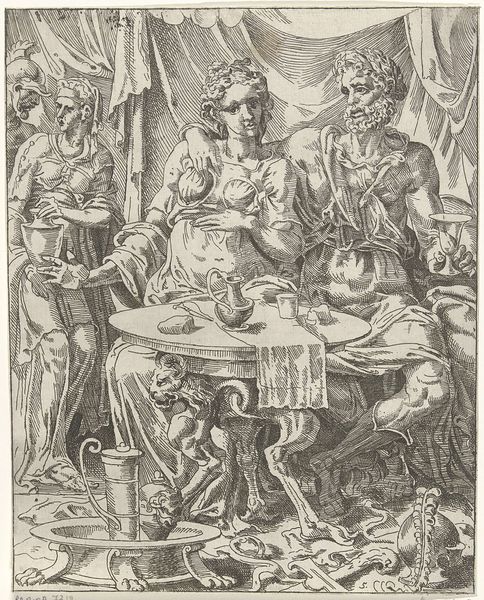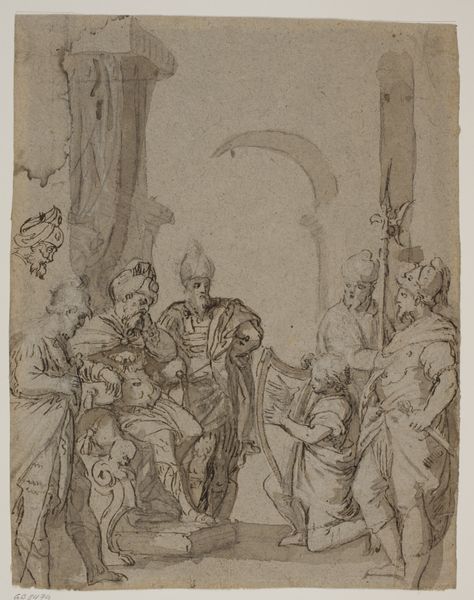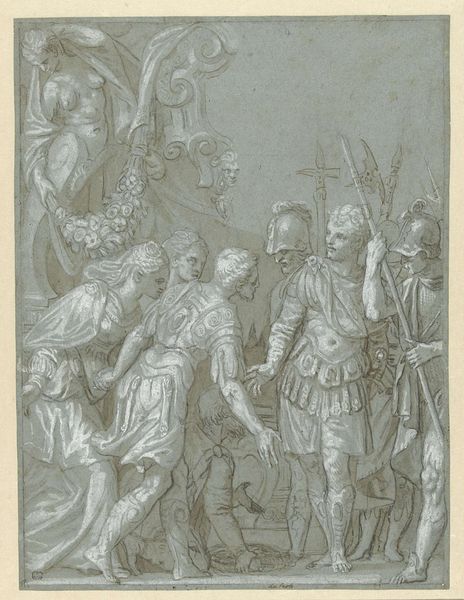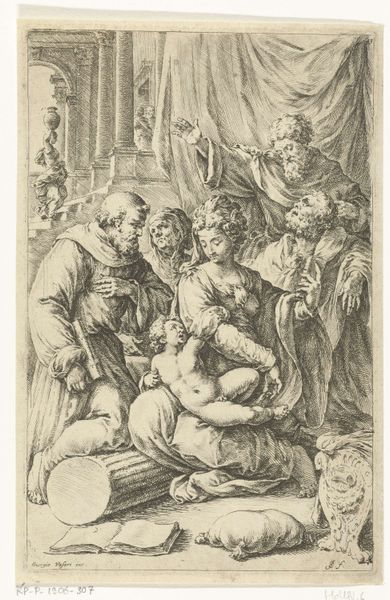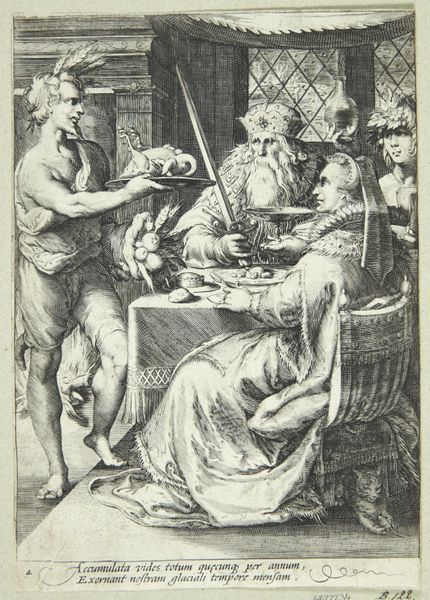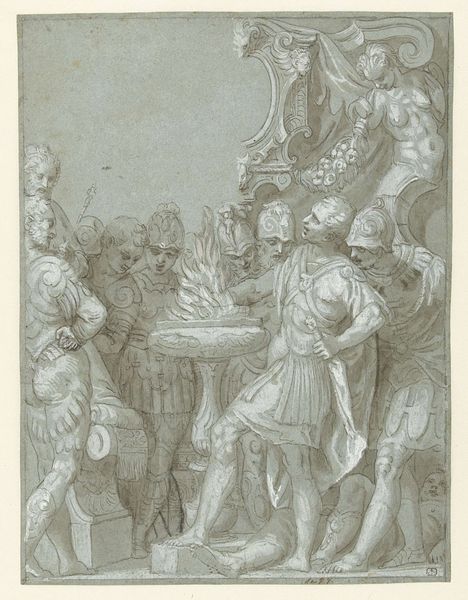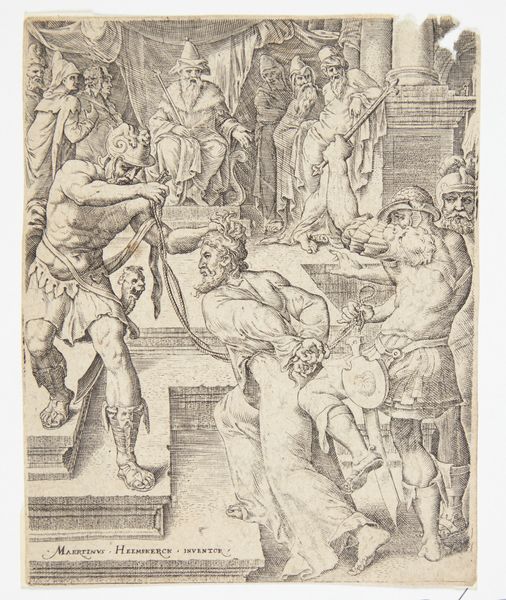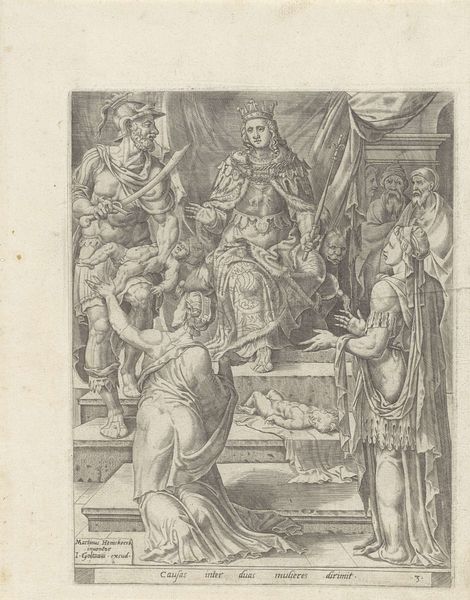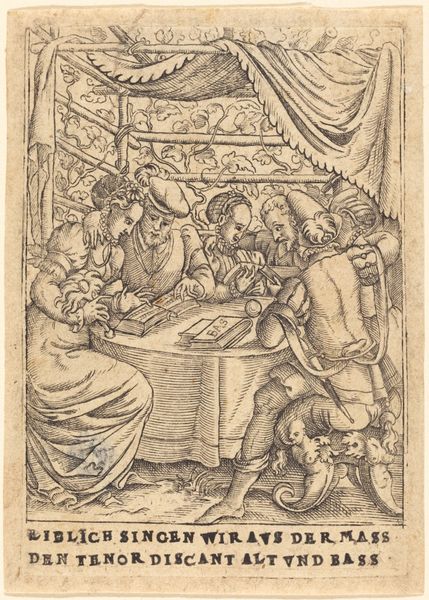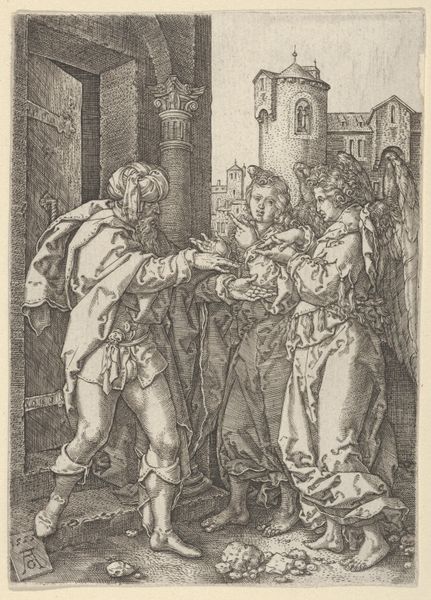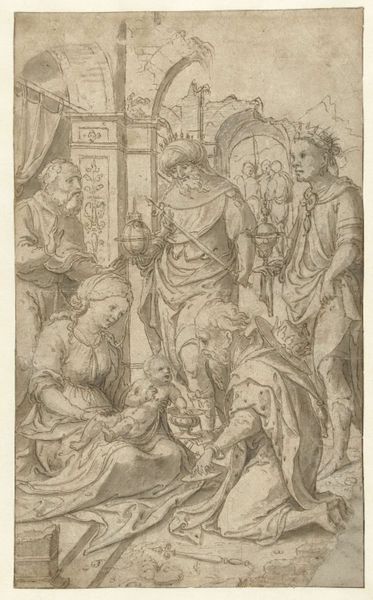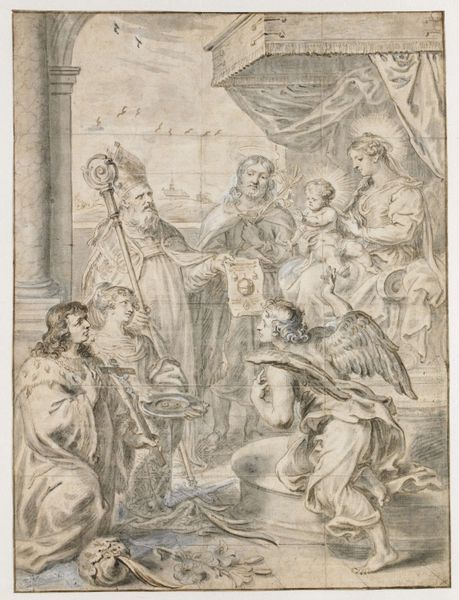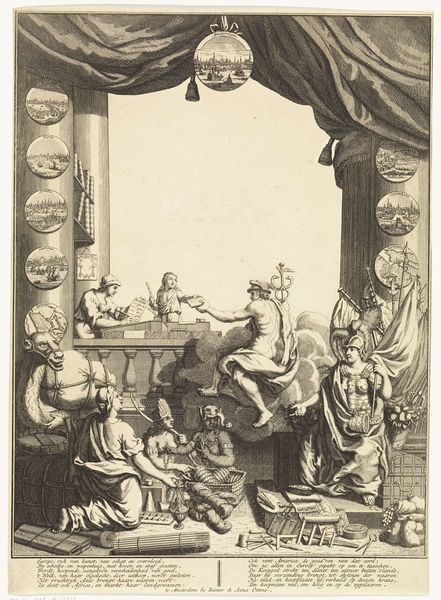
drawing, intaglio, pencil
#
drawing
#
narrative-art
#
intaglio
#
pencil sketch
#
mannerism
#
figuration
#
coloured pencil
#
pencil
#
history-painting
Dimensions: height 240 mm, width 188 mm
Copyright: Rijks Museum: Open Domain
Editor: So, this is Lattanzio Gambara's "Salome receives the Head of John the Baptist," made sometime between 1550 and 1574. It's an intaglio drawing, but it almost looks like a ghostly stage scene. I'm immediately struck by the muted tones and the… awkward arrangement of the figures. What do you make of it? Curator: It's a powerful image, and the awkwardness you note is characteristic of Mannerism, the style prevalent then. Think of the context: religious upheaval, political instability. How do artists respond? Often by distorting classical ideals, embracing complexity, and challenging the viewer. Consider the very public and political role executions held in society then – and how this print transforms it. Editor: That makes sense. I see the Mannerist influence in the elongated figures and the strange perspective. But why this particular subject? It seems so… gruesome for public consumption. Curator: Gruesome, yes, but also morally instructive. The story of Salome and John the Baptist was frequently used to illustrate the dangers of female wiles and unchecked power. Think about who might have commissioned or purchased this work. What messages would they be hoping to circulate? Editor: So, it’s not just a biblical scene; it's also a cautionary tale about societal order. I guess I was initially focusing too much on the aesthetic strangeness and not enough on its political message. Curator: Precisely. The 'strangeness' serves the message. It grabs your attention, unsettles you. Consider also that this was likely not meant for mass consumption but a smaller, elite audience, shaping their worldview. What did you glean from it? Editor: I definitely see it differently now. It's not just an odd drawing; it’s a commentary on power dynamics and social anxieties in 16th-century society. Thanks for showing me the deeper layers! Curator: My pleasure. It highlights how art can both reflect and shape the prevailing ideologies of its time.
Comments
No comments
Be the first to comment and join the conversation on the ultimate creative platform.
